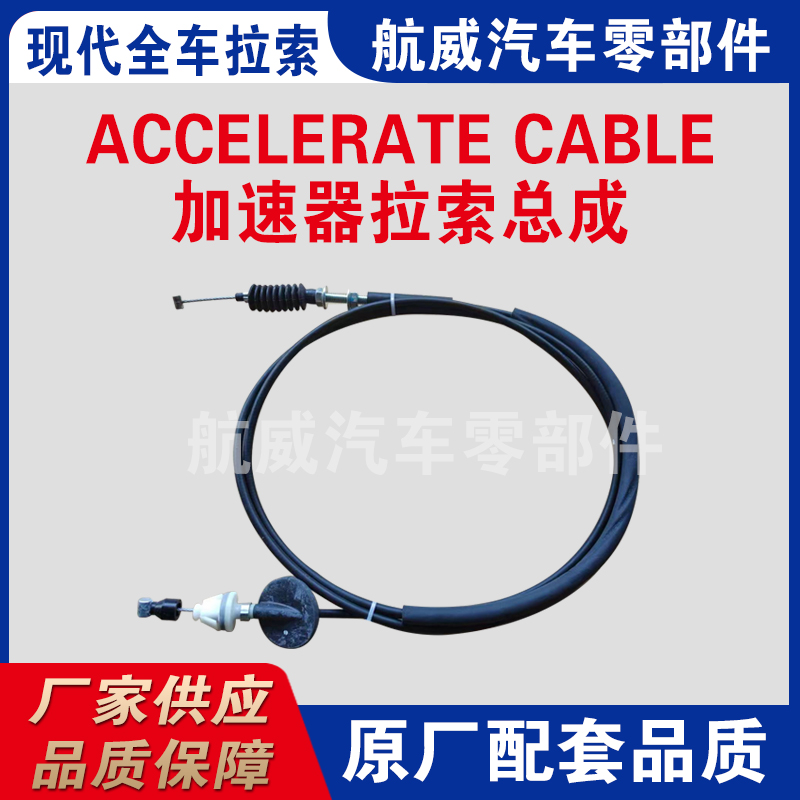carburetor accelerator cable
Understanding the Carburetor Accelerator Cable Function and Maintenance
The carburetor accelerator cable plays a vital role in the proper functioning of an internal combustion engine. This component is often overlooked during regular vehicle maintenance, yet it has a significant impact on engine performance and drivability. Understanding the accelerator cable's function, common issues, and maintenance practices can help vehicle owners ensure a more reliable and efficient driving experience.
What is the Carburetor Accelerator Cable?
The carburetor accelerator cable is the linkage between the accelerator pedal and the carburetor in gasoline-powered vehicles. When you press the accelerator pedal, the cable pulls a lever on the carburetor, allowing more air and fuel to enter the engine. This mechanical action is crucial for regulating the engine's power output and responsiveness. In older vehicles equipped with carburetors, the accelerator cable was an essential component, while modern vehicles with electronic fuel injection have shifted to electronic throttle controls.
How Does It Work?
The accelerator cable is typically made of a durable wire encased in a protective sheath. When the driver presses the accelerator pedal, the force is transmitted through this cable to the carburetor. The carburetor then adjusts the mixture of air and fuel entering the engine, affecting its speed and power output. The degree to which the cable is pulled determines how much the carburetor opens, thus influencing the vehicle's acceleration.
Common Issues with Accelerator Cables
Like any mechanical component, the accelerator cable can experience wear and tear over time. Some common issues include
1. Cable Fraying or Breakage Continuous usage can lead to the cable fraying or eventually snapping. This can occur at any point along the cable and is often exacerbated by corrosion or exposure to the elements.
2. Binding or Sticking Sometimes, dirt, debris, or lack of lubrication can cause the cable to bind or stick. This can lead to unresponsive or erratic acceleration, making the vehicle difficult to drive safely.
3. Misalignment If the cable is not aligned correctly, it can lead to uneven wear on the components, reducing its lifespan and affecting performance.
4. Length Adjustment Issues The accelerator cable may require periodic adjustments to ensure optimal performance. If it is too loose or too tight, it can lead to incomplete throttle actuation.
carburetor accelerator cable

Signs of Accelerator Cable Problems
Vehicle owners should be vigilant for certain signs that indicate issues with the accelerator cable. These can include
- A sticky or unresponsive accelerator pedal. - Inconsistent engine performance or power delivery. - Grinding or rattling noises when pressing the accelerator. - Sudden loss of acceleration power, which can pose a serious safety risk.
Maintenance Tips
Proper maintenance of the accelerator cable can prevent many of these problems and ensure smooth vehicle operation. Here are a few maintenance tips
1. Regular Inspections Periodically check the accelerator cable for signs of wear, fraying, or corrosion. Pay special attention to the cable ends and the points where they connect to the pedal and carburetor.
2. Cleaning and Lubrication Keep the cable clean and free from debris. Applying a suitable lubricant can help reduce friction and prevent binding. Ensure that the lubricant is designed for use with the cable material to avoid damage.
3. Adjustments If you notice any changes in your vehicle's acceleration response, it may be wise to check the cable length and tension. Adjusting the cable may require a mechanic's expertise, especially if the vehicle has not been regularly maintained.
4. Replacement If the accelerator cable is frayed, rusted, or damaged, replacing it promptly is essential. Most auto parts stores carry replacement cables for a wide variety of vehicles.
Conclusion
The carburetor accelerator cable is a crucial component that directly affects engine performance and drivability. Understanding its function and common issues can help vehicle owners take proactive maintenance measures, ensuring their cars run smoothly and safely. By regularly inspecting, cleaning, and maintaining the accelerator cable, drivers can enjoy a more responsive and reliable driving experience. If problems persist, consulting a professional mechanic is advisable to address any underlying issues and keep your vehicle in optimal condition.
-
Upgrade Your Vehicle with High-Quality Handbrake CablesNewsNov.01,2024
-
Optimize Your Bike's Performance with Quality CablesNewsNov.01,2024
-
Enhance Your Vehicle's Performance with Quality Clutch ComponentsNewsNov.01,2024
-
Elevate Your Vehicle's Performance with Quality Throttle CablesNewsNov.01,2024
-
Elevate Your Vehicle's Performance with Quality CablesNewsNov.01,2024
-
Affordable Solutions for Your Cable NeedsNewsNov.01,2024
